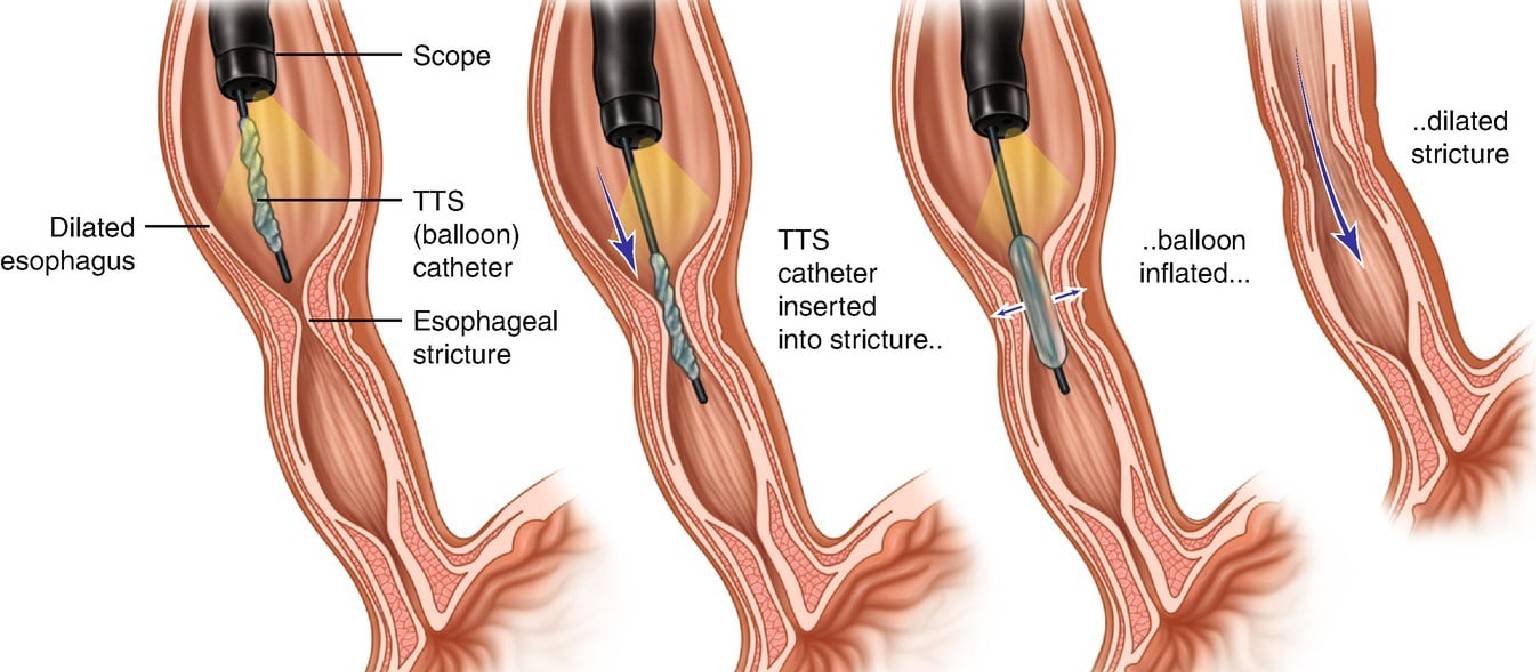Our Services
Menu

Stricture dilatation is a medical procedure used to widen a narrowed area, or stricture, in a hollow organ. Strictures can occur due to inflammation, injury, surgery, or diseases that cause scar tissue buildup, leading to a narrowing that restricts the normal flow of substances (e.g., food in the esophagus or bile in bile ducts). Common areas affected by strictures include the esophagus, bile ducts, intestines, urethra, and blood vessels.
Types of Stricture Dilatation Techniques
- Balloon Dilatation: A balloon-tipped catheter is inserted into the narrowed area, and the balloon is gradually inflated to stretch and widen the stricture. This is commonly done under endoscopic or imaging guidance.
- Bougie Dilatation: Special tubular instruments (bougies) of gradually increasing diameters are inserted through the stricture to stretch it. This is often used for esophageal strictures.
- Endoscopic Dilatation: An endoscope, a flexible tube with a camera, is inserted, and dilating tools are used to widen the stricture. This is widely used for GI tract strictures.
- Fluoroscopic-Guided Dilatation: Imaging guidance (like X-ray fluoroscopy) helps to visualize the stricture and guide the dilating device.
Symptoms:
- Difficulty swallowing (dysphagia): Common in esophageal strictures.
- Abdominal pain: Often from bowel strictures.
- Nausea or vomiting: If food cannot pass through narrowed areas.
- Bloating: Especially in the context of bowel strictures.
- Recurrent GI infections: Due to food stagnation and bacterial overgrowth.
Purpose:
- To open narrow areas in the GI tract, improving the passage of food and waste.
- To relieve symptoms caused by obstructions, such as dysphagia or bowel obstruction.
Indications:
- Esophageal strictures: Due to GERD, radiation therapy, or surgery.
- Inflammatory bowel disease (IBD): Such as Crohn’s disease, where strictures form due to chronic inflammation.
- Post-surgical strictures: Areas where the GI tract has been surgically connected (e.g., after gastric bypass).
Procedure:
- Endoscopic procedure: A balloon or bougie (dilator) is passed through the endoscope to the narrow area.
- Inflation of balloon: To gently stretch and widen the stricture. The procedure is done under sedation.
Treatment:
- Dilation of strictures: To improve food passage.
- Monitoring: Strictures may recur, requiring repeat procedures.
